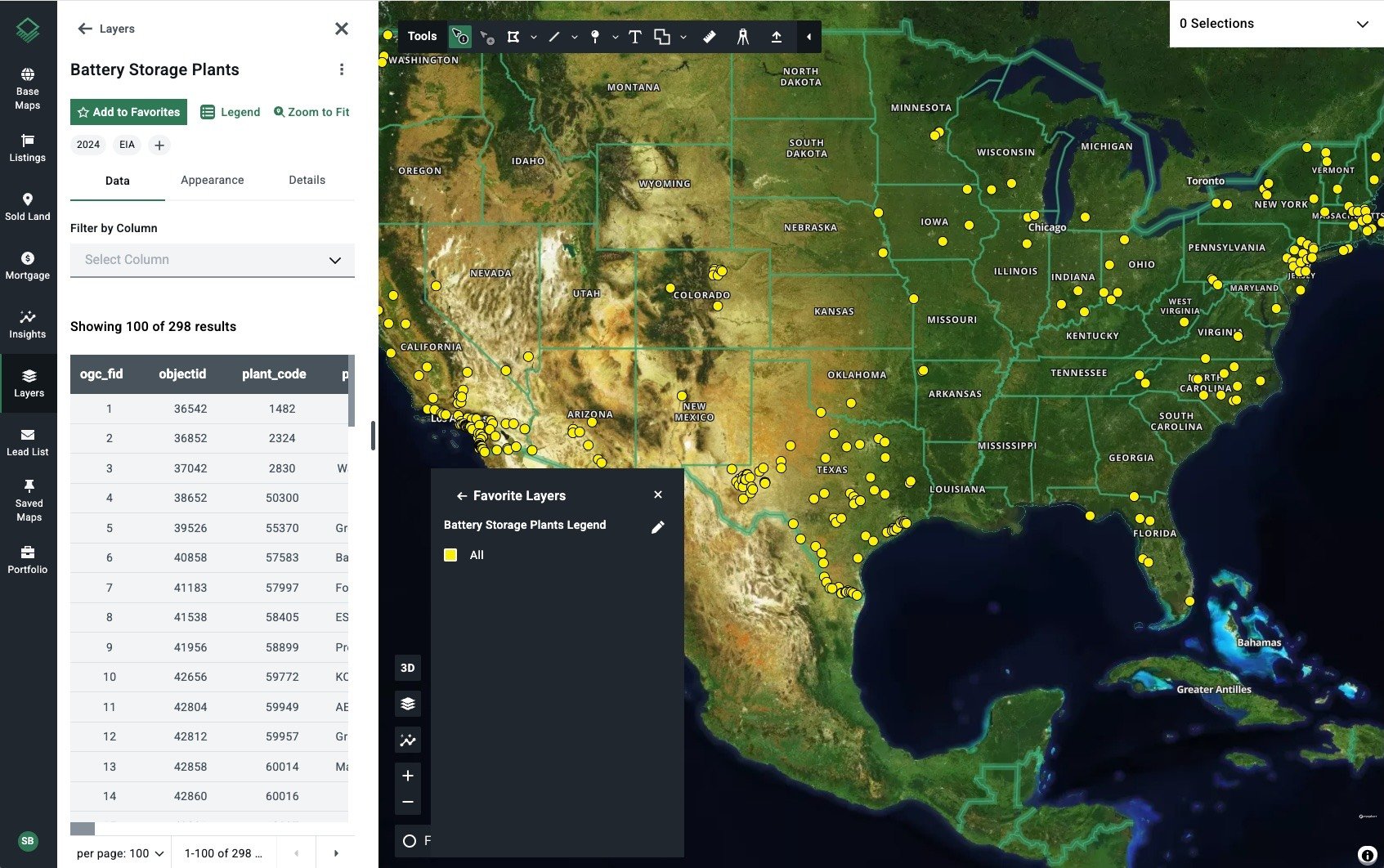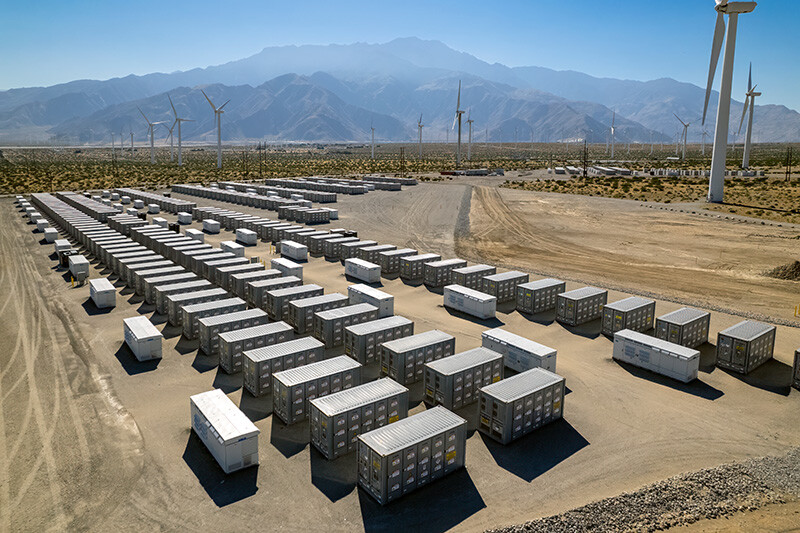Battery storage plants are transforming both the energy industry and land markets. Whether you’re an investor seeking opportunities, a landowner considering a lease, or a real estate professional tracking trends, knowing where these facilities are located is essential.
What are Battery Storage Plants?
A battery factory or battery plant produces large-scale energy storage systems designed to balance supply and demand on the power grid. These battery energy storage systems (BESS) play a crucial role in integrating solar energy battery storage and other renewable energy storage solutions.
By capturing excess power during peak production times and releasing it when demand rises, battery storage facilities help stabilize the grid and support sustainable energy development.
Map of Battery Storage Plants
Acres.com provides a dynamic, interactive Battery Storage Plants Map, offering nationwide insights into energy storage site locations. Available through our Layer Library, this tool helps users make informed land and investment decisions.
Connect with our sales team today to explore hundreds of data layers!

Acres’ U.S. battery storage plant data is derived from the Energy Information Administration (EIA).
Considerations for Land Transactions
If you're buying, selling, or leasing land near energy storage systems, here’s what you need to know:
- Easements & Access Rights: Developers often require road access, utility connections, and transmission lines.
- Regulatory & Permitting Factors: Environmental studies, safety reviews, and zoning laws can impact project timelines and feasibility.
- Resale Considerations: Properties hosting battery storage facilities under long-term leases may have lease agreement terms that affect future buyers.
Considerations for Landowners
Hosting a battery storage facility on your land can present both benefits and risks:
- Revenue Generation: Leasing land to energy developers can create long-term passive income.
- Increased Land Value: Proximity to storage plants, transmission lines, or substations may enhance land value.
- Potential Concerns: Fire safety, electromagnetic fields, and visual impact are factors to evaluate.
- Tax Revenue & Incentives: Some municipalities offer tax credits or subsidies for battery storage projects. You can check eligibility through the IRS or your local government offices.
- Liability & Insurance: Hosting a battery storage site may require specialized insurance for fire hazards or system failures.
Final Thoughts
The rise of battery storage plants is reshaping land use, creating both opportunities and challenges for property owners and investors. From securing long-term leases to navigating regulatory considerations, staying informed is key.
Explore the Battery Storage Plants Map in Acres’ Layer Library to uncover energy infrastructure near your property or investment targets.
